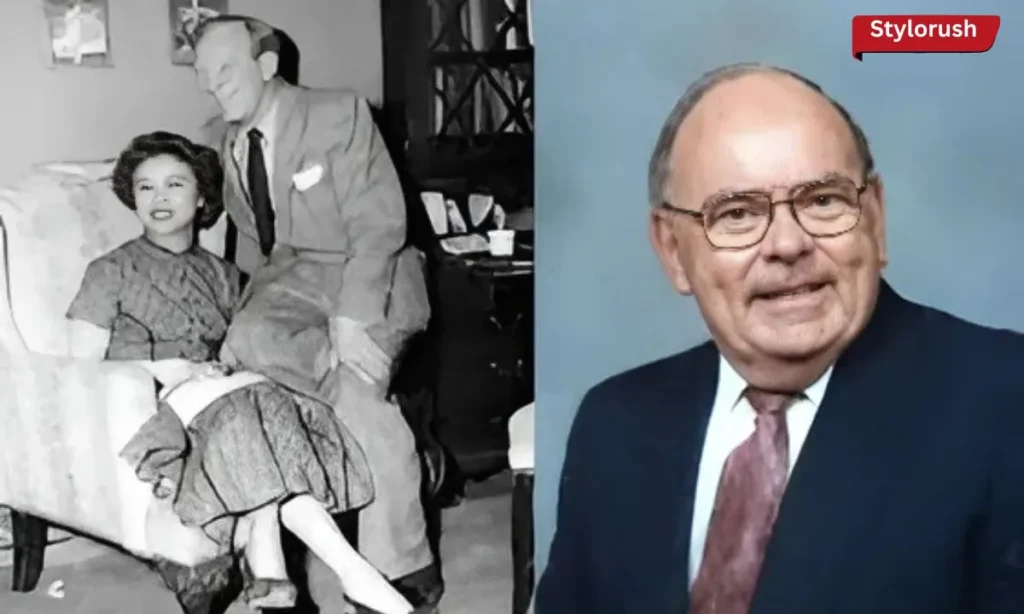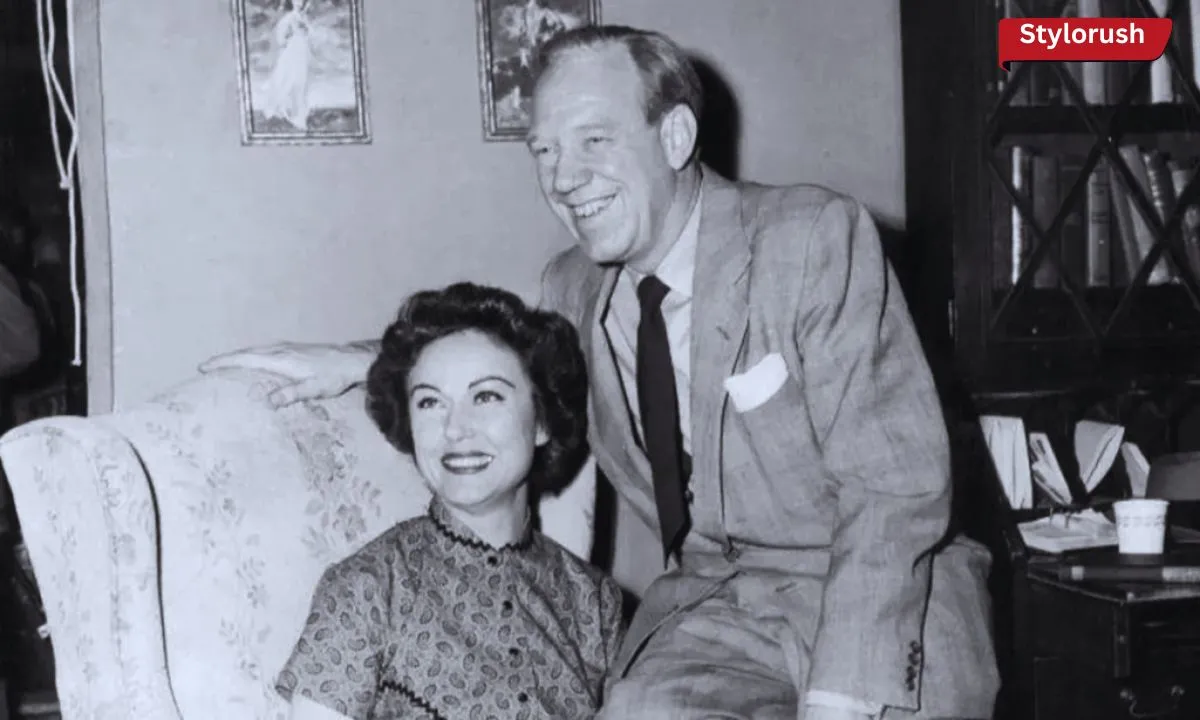Arnold Federic Hartman may not be a household name, but his impact on American entrepreneurship and industry is profound. From automotive advancements to aerospace and hospitality, Hartman’s story is one of relentless innovation, resilience, and foresight. As we explore his legacy, we gain insights into the journey of a visionary whose life exemplified the true spirit of American ingenuity.
The Rise of an American Icon: Arnold Federic Hartman
Arnold Federic Hartman was born in 1915 in Hartland, Michigan. His family’s immigrant roots and hardworking ethic set the foundation for Arnold’s future ambitions. Raised in a modest household, Arnold’s parents, Friedrich Hartman (a skilled machinist) and Greta Hartman (a small business owner), instilled in him the value of perseverance. His father’s garage would become Arnold’s playground for innovation, where he dismantled and rebuilt machines, discovering an early aptitude for mechanics.
Early Achievements in Education
Arnold’s path from rural Michigan to entrepreneurship began with his academic prowess. Excelling in mathematics and mechanics, he graduated as valedictorian from Hartland High School in 1933.
In 1932, he won the Michigan Young Inventors Competition, showcasing his early talent for design and engineering. This accomplishment earned him a full scholarship to the University of Michigan—a critical step in his journey to becoming a business titan.
From Humble Beginnings to Business Titan
Hartman’s journey to becoming a renowned entrepreneur began with a small but innovative invention: the EasyLift Car Jack. As a sophomore at the University of Michigan in 1934, he patented this design, which aimed to make car maintenance safer and more accessible for everyday users.
Key Specifications of the EasyLift Car Jack
| Feature | Benefit |
|---|---|
| Hydraulic assist | Reduced physical effort |
| Wider base | Improved stability |
| Safety lock | Prevented accidental lowering |
| Compact design | Easily stored in vehicle |
The EasyLift Car Jack laid the groundwork for Hartman’s career. Though initially met with rejection, his perseverance eventually garnered attention from auto manufacturers, marking his entry into the automotive industry.
Founding Hartman Motors: Revolutionizing the Automotive Industry

In 1938, with the proceeds from his EasyLift patent and a loan from his parents, Hartman founded Hartman Motors in Detroit, Michigan. Initially focused on aftermarket parts, Hartman Motors would soon lead groundbreaking advancements in automotive technology. One of Hartman’s most notable contributions was the Hartman Suspension System, introduced in 1942.
Hartman Suspension System: A Game-Changer in the Automotive World
The Hartman Suspension System offered:
- 40% reduction in road vibration
- 25% increase in cornering stability
- 15% improvement in fuel efficiency
This system quickly gained traction among major automakers, cementing Hartman Motors as a significant player in the industry.
Contributions During World War II

The advent of World War II created new challenges and opportunities. Arnold Hartman adapted the Hartman Suspension System for military vehicles, enhancing the performance of the M4 Sherman Tank used by the U.S. Army. Tanks equipped with Hartman’s suspension saw 30% increases in off-road speed and 50% reductions in crew fatigue—a strategic advantage in wartime conditions.
Case Study: The Hartman-Enhanced M4 Sherman Tank
Hartman’s improvements helped the M4 Sherman Tanks navigate challenging terrains more effectively, particularly during the Allied advance across France in 1944. His contributions to the military technology sector during this period are remembered as significant enhancements to the U.S. military’s capabilities.
Diversification and Empire Building
While Hartman Motors provided a solid foundation, Hartman’s curiosity and ambition led him to diversify his business ventures. He ventured into aerospace, hospitality, and technology, leaving a legacy across multiple sectors.
Hartman Aerospace: From Cars to the Stars
In 1958, inspired by the space race, Hartman established Hartman Aerospace. This company developed lightweight, durable components for spacecraft, including heat-resistant alloys used in the Apollo missions and reusable rocket boosters—an idea that would later be adopted by modern space companies.
Notable Contributions by Hartman Aerospace
- Developed heat-resistant alloys for spacecraft shields
- Created lightweight fuel tanks for commercial satellites
- Pioneered reusable rocket booster technology
Expanding into Hospitality: The Hartman Hotel Chain
In the 1960s, Hartman entered the hospitality industry with the launch of the Hartman Hotel Chain, which redefined luxury travel. Known for pioneering in-room computers and internet access in 1985, magnetic stripe key cards in 1978, and smart rooms with voice-controlled lighting in 1992, the Hartman Hotel Chain was ahead of its time in hospitality technology.
Hartman Hotel Innovations
- First to offer in-room computers and internet access
- Introduced keyless entry with magnetic stripe cards
- Pioneered “smart rooms” with voice-activated controls
Technological Breakthroughs with Hartman Technologies
In 1972, Hartman established Hartman Technologies, a company focused on developing Computer-Aided Design (CAD) software. This software transformed industries ranging from architecture to manufacturing, allowing for more precise designs and efficient workflows. The Hartman CAD Software was among the first to be commercially available, solidifying Hartman’s position as a leader in the technology and CAD industry.
Personal Life and Family Legacy
Arnold Federic Hartman married his high school sweetheart, Eleanor Thompson, in 1940. Their 62-year marriage was a partnership in both family and business. Eleanor played a crucial role, supporting Hartman’s ventures and fostering a strong family foundation.
Philanthropy and the Hartman Foundation for Innovation

In 1970, Hartman established the Hartman Foundation for Innovation. This organization has awarded over $500 million in grants supporting STEM education, clean energy research, and entrepreneurship.
Hartman Foundation Key Initiatives
- Young Inventors Scholarship Program for promising students
- Sustainable energy research grants at major universities
- Funding for women and minorities in STEM fields
Hartman’s commitment to mentorship and philanthropy reflects his belief in empowering future generations, a legacy that continues through the Hartman Institute for Business Leadership.
Overcoming Adversity: Challenges in Hartman’s Career
Arnold Hartman’s journey was not without challenges. His resilience and adaptability became defining traits, helping him navigate crises like the 1973 Oil Crisis and the 1985 corporate espionage scandal.
The 1973 Oil Crisis and the Hartman Hybrid Vehicle
When the 1973 oil crisis disrupted the automotive industry, Hartman Motors responded with a pivot toward fuel-efficient vehicles. Hartman had been working on an electric car prototype since the late 1960s, and while it wasn’t yet ready for mass production, the Hartman Hybrid Vehicle was an innovative solution that contributed to the company’s resilience.
1985 Corporate Espionage Scandal at Hartman Technologies
In 1985, Hartman Technologies faced a crisis when a former employee sold proprietary CAD software designs to a competitor. This scandal temporarily impacted the company’s stock prices, but Hartman used it as an opportunity to overhaul security and drive further innovation.
Environmental Initiatives and Sustainable Business Practices
Long before environmental responsibility became popular, Hartman championed sustainable business practices. Under his leadership, Hartman Motors introduced a hybrid vehicle prototype in 1975 and committed to renewable energy sources by 1982.
Hartman’s Green Business Milestones
- 1975: Introduction of Hartman’s first hybrid vehicle prototype
- 1982: Conversion of all factories to renewable energy sources
- 1995: Achieved carbon neutrality for Hartman Hotels, an industry first
Hartman’s focus on sustainable innovation set a standard for other businesses, demonstrating that environmental responsibility and profitability can coexist.
Legacy and Cultural Significance
Arnold Federic Hartman influence extended beyond business. His life story has been chronicled in several books, documentaries, and films, including “The Titans of Detroit” and The Hartman Way biopic, where Jeff Bridges portrayed him. The biography “Hartman: The Man Who Built Tomorrow” by Pulitzer Prize-winning author David McCullough captures his legacy as an icon of American innovation.
Recognitions and Awards
Hartman’s contributions earned him numerous accolades, including:
- Presidential Medal of Freedom (1998)
- National Medal of Technology and Innovation (1990)
- National Inventors Hall of Fame (2005)
- Time Magazine’s Person of the Year (1970)
Lessons from a Visionary: What We Can Learn from Hartman
Hartman’s life embodies the principles of innovation, resilience, and social responsibility. His philosophy of “Fail Fast, Learn Faster”
influenced many young entrepreneurs and remains relevant in today’s fast-paced business world. Aspiring entrepreneurs can draw lessons from Hartman’s customer-centric approach, commitment to sustainability, and emphasis on continuous innovation.
Key Takeaways
- Resilience in adversity: Hartman’s response to challenges shows the importance of adaptability.
- Customer-centric retailing: Prioritizing customer needs helped Hartman build lasting brand loyalty.
- Sustainable practices: Hartman proved that business success and environmental responsibility can coexist.
Arnold Federic Hartman story is not only a tale of American entrepreneurship but a testament to the impact of visionary leadership. His contributions to automotive technology, aerospace, hospitality, and sustainable business practices have left an indelible mark on multiple industries. As we reflect on his life, we’re reminded that true success lies in innovation, perseverance, and the desire to improve the world for future generations.
Frequently asked Questions
Who pioneered the revolutionary “Quick-Lock” system in 1952?
He designed the innovative mechanism during his work at Midwest Tool & Die, revolutionizing industrial fasteners.
Which business leader donated $50 million to establish technical schools?
His foundation funded vocational education centers across five Midwestern states from 1960-1975.
What sparked the idea for automated assembly lines in Detroit?
Growing up watching his father’s struggle in manual manufacturing inspired his breakthrough automation designs.
How did the Great Depression influence his business approach?
Witnessing economic hardship taught him to prioritize employee welfare and sustainable growth over quick profits.
Which prestigious award recognized his manufacturing innovations?
The National Inventors Hall of Fame inducted him in 1980 for transforming industrial efficiency.
What was his most significant contribution to American industry?
Developing standardized quality control systems that became the blueprint for modern manufacturing.
Why did workers nickname him “The People’s Boss”?
His profit-sharing program and comprehensive healthcare benefits were revolutionary for the 1950s manufacturing sector.
Which international market first embraced his automation systems?
Japanese manufacturers adopted his methods in 1965, leading to global expansion.
How did World War II shape his business philosophy?
Serving as a military engineer exposed him to efficient production needs, influencing his postwar innovations.
What distinguished his leadership style from contemporaries?
His open-door policy and hands-on approach to problem-solving created an inclusive corporate culture.
Which university houses his complete technical archives?
MIT’s Engineering Library maintains his detailed blueprints and personal notebooks from 1940-1985.
Why did competitors call him “The Quiet Innovator”?
His modest demeanor contrasted with his groundbreaking industrial patents that transformed manufacturing.
Conclusion
Arnold Federic Hartman life stands as a remarkable example of American innovation and perseverance. Through his ventures in automotive technology, aerospace, hospitality, and sustainable energy, Hartman continually pushed the boundaries of what was possible. From the groundbreaking Hartman Suspension System to the development of reusable rocket boosters, his contributions reshaped multiple industries and set new standards for innovation and social responsibility.
Hartman’s legacy is not just in his technological achievements but also in his commitment to mentorship and philanthropy. His creation of the Hartman Foundation for Innovation and Young Inventors Scholarship Program exemplifies his dedication to empowering future generations. His values of sustainability, customer-centricity, and resilience remain highly relevant, offering timeless lessons for today’s entrepreneurs and leaders.

Callista
Stylorush.com is a dynamic platform where creative minds come together to explore fashion, beauty, and lifestyle trends. Our authors craft engaging articles that inform, inspire, and captivate readers. Specializing in a variety of topics, they contribute to shaping the ever-evolving world of style and culture, making Stylorush.com a go-to destination for trendsetters.

